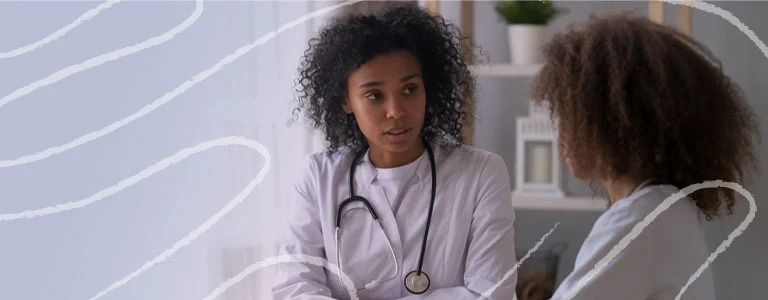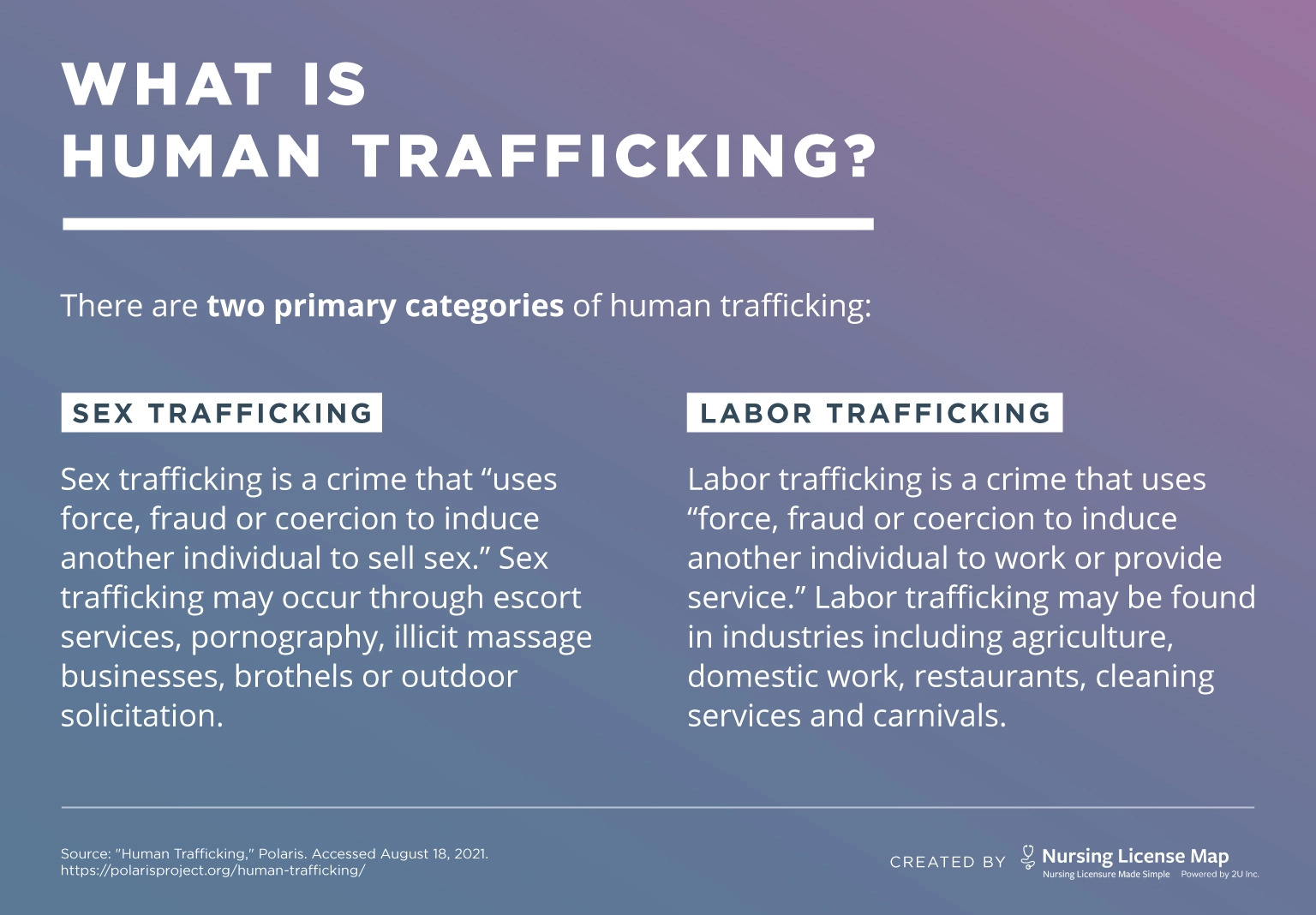A Health Provider’s Role in Fighting Human Trafficking

Human trafficking, a form of modern slavery that exploits people for labor and sex, affects about 24.9 million victims worldwide, the U.S. State Department estimates. And the majority of victims will encounter the health care system during their time being trafficked.
Health care providers are uniquely positioned to identify and help human trafficking victims because of the likelihood they will come into contact with victims—particularly in urgent care settings, said forensic nurse Diana Faugno, MSN, RN, CPN.
“They’re coming into the emergency rooms, the urgent care [facilities] and the clinics,” said Faugno, past president of the Academy of Forensic Nursing. “To get health care providers on the same page, they need a lot of training on this. They know what it is … but they don’t know what to do, and that’s the big issue.”
With some education and training, clinicians can recognize and respond to human trafficking.
Read on to better understand human trafficking, how health workers and community members can identify it, and what measures can help disrupt cycles of forced sex work and labor.
What Is Human Trafficking?
There are two primary categories of human trafficking, acccording to Polaris, a nonprofit organization that works to combat human trafficking.
Sex trafficking is a crime that “uses force, fraud or coercion to induce another individual to sell sex.” Sex trafficking may occur through escort services, pornography, illicit massage businesses, brothels or outdoor solicitation.
Labor trafficking is a crime that uses “force, fraud or coercion to induce another individual to work or provide service.” Labor trafficking may be found in industries including agriculture, domestic work, restaurants, cleaning services and carnivals.

Other industries and settings where human trafficking exists include bars and strip clubs, traveling sales, forced peddling, manufacturing construction, landscaping, forestry and illicit activities, according to a 2017 Polaris report (PDF, 4.9MB). Human trafficking victims may be involved in one or both types of trafficking.
Human trafficking is different from human smuggling. Although human trafficking and smuggling can be related, human trafficking and smuggling are different crimes. Human traffickers exploit people for work or sex, while human smugglers provide services to illegally move people across borders.
Although human trafficking and smuggling can be related, human trafficking and smuggling are different crimes.
Who Does Human Trafficking Affect?
Because human trafficking is an underreported crime, comprehensive human trafficking data is difficult to obtain. However, Polaris identified 22,326 human trafficking victims and survivors in 2019 through the U.S. National Human Trafficking Hotline.
14,597
were sex trafficking victims/survivors.
1,048
were sex and labor trafficking victims/survivors.
4,934
were labor trafficking victims/survivors.
1,747
cases were not specified.
Medical professionals are among the top five sources from whom human trafficking victims seek help, according to Polaris. These groups include:
- Friends/family
- Law enforcement/criminal justice
- Health services
- Mobile apps/social media
- Welfare system
4 Human Trafficking Myths vs. Facts
Myth: Human trafficking only affects women and girls.
Fact: Men and boys are also vulnerable to human trafficking, particularly LGBTQ+ youth.
Myth: Human trafficking only involves sex.
Fact: Experts estimate labor trafficking is more prevalent worldwide than sex trafficking.
Myth: Human trafficking victims are always forced into their situations through violence or physical force.
Fact: Most traffickers use psychological control to manipulate their victims.
Myth: Victims do not typically know their traffickers.
Fact: Romantic partners and family members are sometimes involved in human trafficking.
Source: “Myths, Facts, And Statistics,” Polaris. Accessed July 29, 2021.
Health Providers’ Role in Recognizing and Preventing Human Trafficking
There are often physical, behavioral, social or environmental signs someone is a victim of human trafficking, according to the Administration for Families and Children, but sometimes none of these signs are present in patients.
Research in the Journal of Pediatric Health Care indicates the physical and mental health impacts of trafficking include:
- Fatigue
- Acute or chronic pain
- Unexplained or repeated traumatic injuries
- Oral health problems
- Sexual and reproductive health problems
- Exposure to pesticides and hazardous chemicals
- Anxiety
- Depression
- PTSD
- Substance abuse or misuse
Nurses and other health care providers are well-positioned to identify victims of human trafficking, as studies have shown that most trafficking victims encounter medical providers during their time being trafficked. Most encounters occur in the emergency room, according to research in Health and Human Rights Journal.
Although clinicians may detect warning signs of human trafficking among patients, training can help them more effectively respond to possible human trafficking situations.
How Can Clinicians Fight Human Trafficking?
There are several steps health care providers can take to identify human trafficking and intervene. It starts with speaking with patients privately, Faugno said.
“When they’re starting to get a history, it’s got to be in private,” said Faugno, who is also certified as a sexual assault nurse examiner for adult and pediatric populations. “No one is going to answer any of these questions if the person standing there is watching them. They fear for their lives. So, COVID-19 helped with that because we could keep them out if [victims] did happen to come in.”
IDENTIFYING HUMAN TRAFFICKING
As part of screening, health care providers can ask about:
Living and working conditions, such as:
- Are you free to come and go in your home as you please?
- Can you leave the place you work without threats to your safety?
- Have you ever worked without receiving the payment you thought you would get?
- Does anyone at your workplace make you feel scared or unsafe?
- Do you live with your employer?
Risk factors for sex trafficking, such as:
- Where do you sleep and eat?
- Do you live there with other people?
- Are you being forced to do anything you don’t want to do?
- Have you been denied food, water or medical care?
How you can help the patient, such as:
- What can I do for you?
- What do you want to happen next?
Signs that may indicate a patient is a human trafficking victim:
- Adult patients who are accompanied by another person who won’t leave the room and/or who speaks for the patient.
- Patients without identification.
- Patients who speak other languages.
- Patients who spend a lot of time looking down at the floor.
- Patients who return to the clinic or emergency room frequently for issues such as urinary tract infections, sexually transmitted infections or mental health issues.
Sources:
- Byrne, Melissa RN; Parsh, Sophia BSN; Parsh, Bridget EdD, RN. “Human trafficking: Impact, identification, and intervention,” Nursing Management, August 2019. Accessed Aug. 2, 2021.
- Diana Faugno.
INTERVENING IN HUMAN TRAFFICKING
When clinicians suspect a patient is a victim of human trafficking, they can take steps to help them.
- Use “winning statements,” Faugno said, such as:
You’re safe.
We’re here to help you.
Our priority is your safety.
We’ll give you the medical care you need.
We can find a safe place for you to stay.
You deserve the chance to become self-sufficient and independent.
- Connect patients with community resources.
- For patients who are minors and being trafficked for sex, call 911.
- Call the National Human Trafficking Hotline, 1-888-373-7888.
- If an adult patient is not ready to be removed from their situation, give the patient the hotline numbers so they can get help when they are ready. Trafficking victims and survivors can call 1-888-373-7888 or text “BeFREE” to 233733 to reach the hotline.
Health practitioners should keep in mind that for adult patients, the decision to seek help to leave a human trafficking situation is up to the patient, Faugno said.
“We’ve got to understand that it’s not, ‘I’m here to rescue you.’ That’s not what this is,” Faugno said. “When they’re ready, they’re going to say.”
How Can Health Practitioners Provide Trauma-Informed Care For All?
Created by the Centers for Disease Control and Prevention and the Substance Abuse and Mental Health Services Administration, the six guiding principles of trauma-informed care apply to disciplines beyond medicine:

Safety

Trustworthiness and transparency

Peer support

Collaboration and mutuality

Empowerment, voice and choice

Cultural, historical and gender considerations
There are several steps providers can take to provide trauma-informed care for all patients, according to Harvard Health Publishing:
- Recognize how common trauma is and acknowledge there are different forms of trauma.
- Establish trust with patients.
- Explain why you are asking sensitive questions.
- Explain the need to perform a physical exam.
- Let patients bring trusted friends or family in the exam room with them.
- Ask whether there is anything in a patient’s history that makes medical exams difficult.
- Respond with compassion if a patient refuses an exam.
- Ask if there is anything you can do to make a patient’s experience more positive.
How to Stop Human Trafficking and Support Survivors
In addition to health care providers, community members can also play a role in ending human trafficking. Some of the steps below may help people outside the medical community combat human trafficking and support survivors close to home.
How to Help Fight Human Trafficking
- Take human trafficking awareness training to learn how to recognize potential victims and respond to trafficking situations.
- Report human trafficking suspicions by calling 911 or the National Human Trafficking Hotline (1-888-373-7888).
- Be a conscientious consumer and understand the labor practices of businesses you buy from.
- Support or volunteer with anti-trafficking organizations and efforts near you.
- Donate to organizations that fight human trafficking (see below for a list of groups working to combat human trafficking).
- Set up news alerts to stay informed about human trafficking stories locally, nationally and internationally.
- Share awareness resources with your community.
- Write your local, state and federal government representatives and urge them to keep human trafficking as a priority.
Sources:
- “15 Ways You Can Help Fight Human Trafficking,” U.S. Department of State. Accessed July 29, 2021.
- “10 Ways You Can Help End Trafficking,” Office on Trafficking in Persons, Administration for Children and Families. Dec. 16, 2019. Accessed July 29, 2021.
These organizations fighting human trafficking can also help people learn more about the issue and take action:
- CAST (Coalition to Abolish Slavery & Trafficking)
- Coalition Against Trafficking in Women
- FAIR Girls
- Freedom Network USA
- Global Alliance Against Traffic in Women
- Love146
- Male Survivor
- National Center for Missing and Exploited Children
- National Human Trafficking Hotline
- National Sexual Violence Resource Center
- Polaris
- Stop the Traffik
- UNICEF
- U.S. Department of Health and Human Services: Office on Trafficking in Persons
Additional Resources for Health Care Providers
These resources can help practitioners learn more about responses to human trafficking and connect patients to help.
- American Hospital Association: A Trauma-Informed Health Care Response webinar
- American Hospital Association: Combating Human Trafficking: digital toolkit
- HEAL Trafficking: Resources
- Human Trafficking Capacity Building Center: Resource Library, Trauma-Informed Care
- Human Trafficking Capacity Building Center/Project Trust: Trauma-Informed Care Resources (PDF, 152KB)
- International Council of Nurses: Human Trafficking: The basics of what nurses need to know (PDF, 578KB)
- National Human Trafficking Hotline Referral Directory
- Nursing Management: Human Trafficking: Impact, identification and intervention
- PEARR Tool
- Project Trust: Resources
- SAMHSA: Resources for Child Trauma-Informed Care
- U.S. Department of Health and Human Services: Services Available to Victims of Human Trafficking (PDF, 2.3MB)

